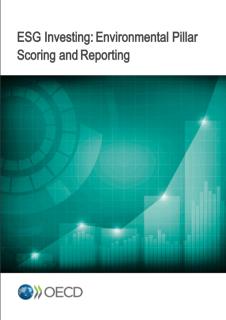
With growing numbers of institutional investors and funds now incorporating various environmental social and governance (ESG) investing approaches, the extent to which environmental (E) pillar scoring and investing reflect the environmental impact, carbon footprint and resource use of these investments is critical to enable market participants to make informed decisions relating to a low carbon transition. This can include a strategic re-orientation towards renewables, climate-related risk management and adaptation, as well as operational processes to improve water use, waste management and impact on biodiversity.
This report assesses the landscape of criteria and measurement within the E pillar of ESG investing to better understand the extent to which E scores reflect outputs such as carbon emissions and core metrics that capture the negative effects of business activities on the environment, and to understand the impact of climate change to businesses. In doing this, the report examines whether E scoring and reporting effectively serve markets and investors that are using ESG investing in part as a tool to make portfolios more resilient to physical and climate transition risks.
